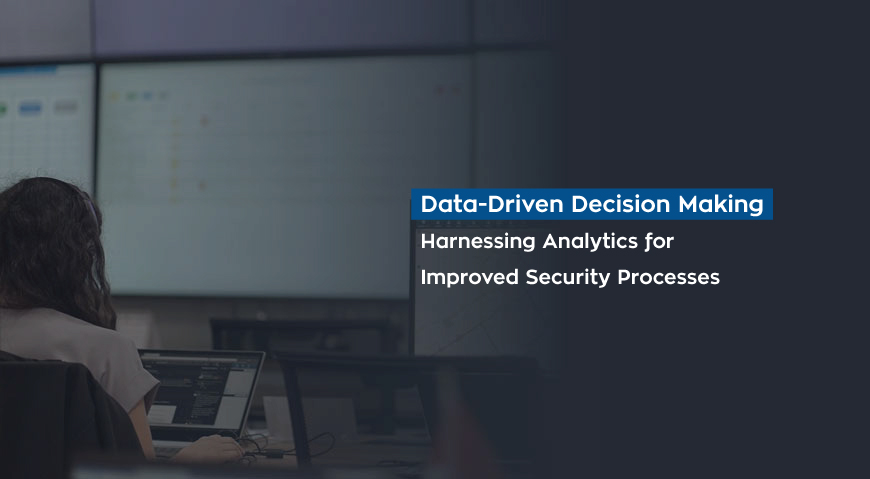- Posted by: blignos
- Published: 29-08-2023
- Category: Latest news
Data-Driven Decision Making: Harnessing Analytics for Improved Security Processes
The responsibility of ensuring that an organization's operations and assets, both physical and virtual, are adequately protected falls on the shoulders of security professionals. This involves identifying potential risks and threats to the organization by analyzing data and using it to inform decisions. Data-driven decision making can help gain insights into potential risks and threats that could negatively impact operations, enabling proactive measures to be taken in order to ensure the security and resilience of the organization. By embracing a data-driven approach, organizations can effectively strengthen their security measures, mitigate risks, and make informed decisions that safeguard their operations and assets.
How can you ensure that your organization is leveraging data-driven insights to make better security decisions? Let’s explore that together.
Data-tize the Power!
Successfully implementing data-driven decision making requires an organizational culture of open communication and data sharing. It is important to create an environment where people can openly discuss their ideas on how to use analytics for improved security outcomes. Encouraging collaboration between teams across the organization will also help to foster a culture of data-driven decision making. For instance, employees should be empowered to question the effectiveness of existing security tools by asking probing questions: What exactly is being measured? How accurate are these measurements, and why do they matter? By encouraging this level of inquiry, organizations can drive innovation and continuously improve their security strategies.
Decipher the Data!
To ensure that your organization is taking full advantage of data-driven insights, it is important to analyze the data generated by different systems such as intrusion detection and prevention systems, firewalls, antivirus solutions, log management solutions, and others in order to detect potential threats or vulnerabilities. By creating an analytics system that collects all relevant information from these sources in one location, you can gain valuable insights into potential security risks and take proactive measures accordingly.
Decode the Risks
Identifying potential risks associated with different aspects of security should be a top priority for any security manager. A risk assessment process should be established in order to determine the likelihood of certain attacks or other malicious activities occurring against the organization's assets or networks. By analyzing existing trends in threat activity, security managers can better predict future scenarios and plan accordingly for proactive measures against them.
Streamline the Data
Automating critical processes such as logging events from multiple sources helps streamline processes related to threat analysis and incident response time. This helps organizations stay ahead of sophisticated attackers who may attempt to exploit vulnerable systems or networks within an organization’s infrastructure quickly before they can be identified through manual processes.
Modernizing an organization’s approach towards dealing with evolving threat landscapes has become essential for achieving improved security outcomes today. Utilizing analytics for informed decision making is one such strategy that has helped many organizations successfully manage their environments while reducing overall risk exposure at the same time. Taking these actionable steps outlined above will undoubtedly help any security manager achieve greater success when dealing with today's digital threats landscape!
Written by Maria-Christina Antoniou

















